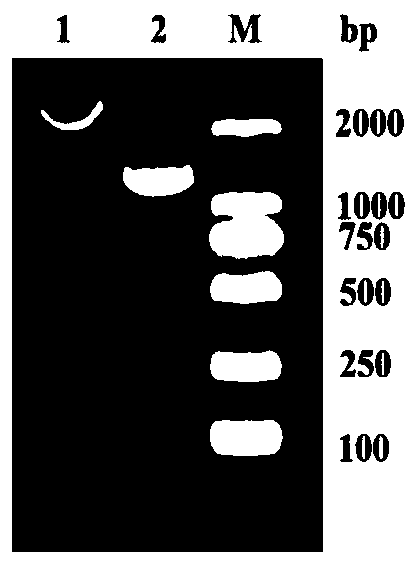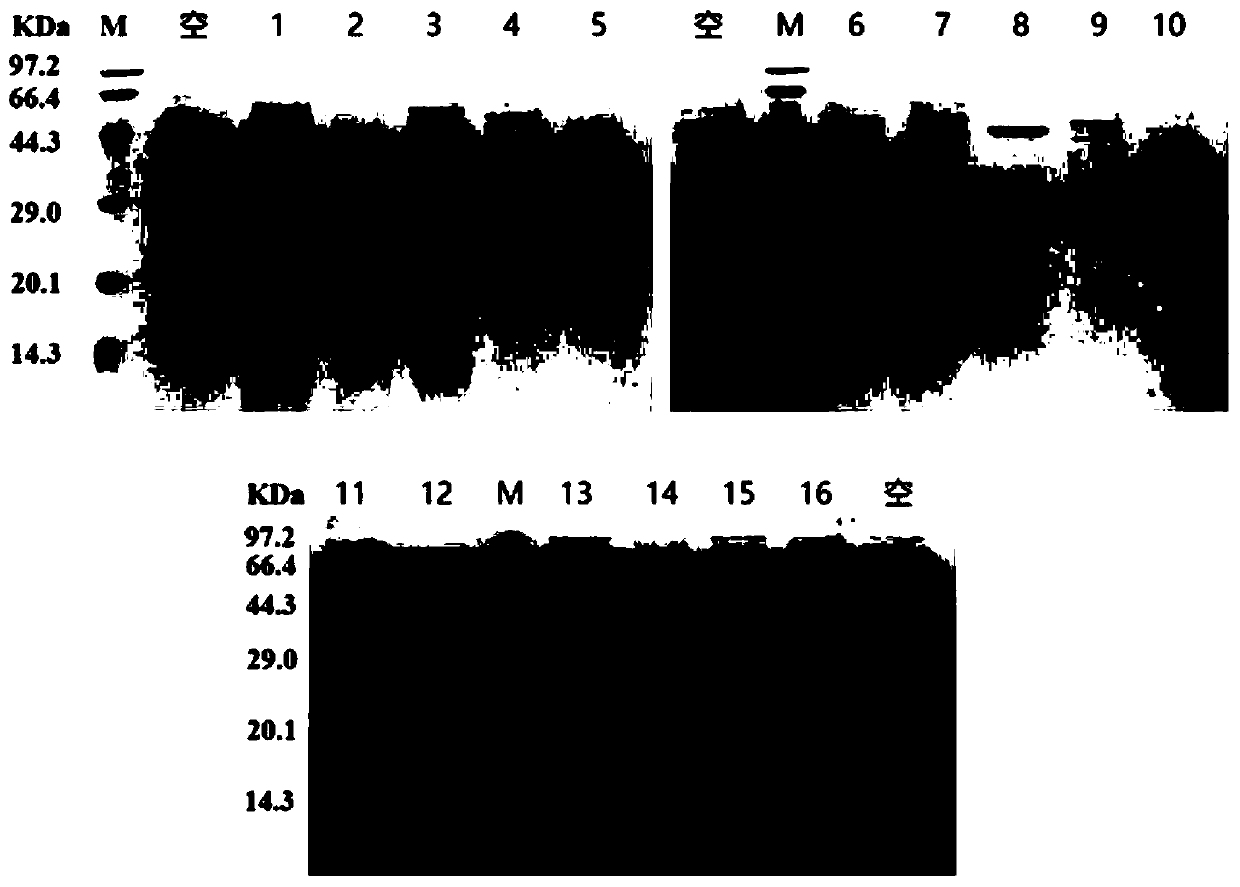Humanized bispecific nano antibody targeting EGFR (epidermal growth factor receptor) dimer interface
A bispecific, nanobody technology, applied in the field of genetic engineering, can solve the problem that the anti-tumor activity is difficult to reach conventional antibodies, etc., and achieve the effect of enhancing the inhibitory effect
- Summary
- Abstract
- Description
- Claims
- Application Information
AI Technical Summary
Problems solved by technology
Method used
Image
Examples
Embodiment 1
[0037]Example 1 Gene design of humanized bispecific nanobody targeting EGFR dimer interface
[0038] According to Genbank’s published nanobody targeting human serum albumin HSA pm6A6, anti-NK cell surface Fc receptor FcγRIIIa (CD16) nanobody and the laboratory’s existing nanobody targeting EGFR dimer interface EGFR dimer Nb77, construction of a humanized bispecific nanobody targeting the EGFR dimer interface.
[0039] Wherein, the amino acid sequence of HSA pm6A6 is:
[0040] AVQLVESGGGLVQPGNSLRLSCAASGFTFRSFGMSWVRQAPGKEPEWVSSISGSGSDTLYADSVKGRFTISRDNAKTTLYLQMNSLKPEDTAVYYCTIGGSLRSSQGTQVTVSS (the amino acid sequence is shown in SEQ ID NO.3);
[0041] The amino acid sequence of the Nanobody against Fc receptor FcγRIIIa (CD16) on the surface of NK cells is:
[0042] EVQLVESGGELVQAGGSLRLSCAASGLTFSSYNMGWFRRAPGKEREFVASITWSGRDTFYADSVKGRFTISRDNAKNTVYLQMSSLKPEDTAVYYCAANPWPVAAPRSGTYWGQGTQVTVS (the amino acid sequence is shown in SEQ ID NO.4);
[0043] The amino acid sequence of the nan...
Embodiment 2
[0048] Example 2 Construction of a recombinant plasmid containing a humanized bispecific nanobody targeting the EGFR dimer interface
[0049] 1. Experimental method
[0050] Primers were designed using Primer Premier 6.0 software, and the primers were synthesized by Wuhan Jinkairui Bioengineering Co., Ltd. The design is shown in Table 1.
[0051] Table 1 Primer Design Sequence:
[0052]
[0053] F: upstream primer; R: downstream primer
[0054] Using the recombinant vector pUC57-NK-77 obtained in Example 1 as a template, the target gene was amplified by PCR, and the pGAPZα-A plasmid was extracted at the same time, followed by enzyme digestion and ligation of the target gene and the vector.
[0055] 2. Experimental results
[0056] The target gene and the expression vector pGAPZαA were digested with Xho I and Xba I at the same time. After the plasmid was recovered, the results of agarose electrophoresis identification were shown in figure 2 . The size of the vector is ...
Embodiment 3
[0057] Example 3 Transformation and expression of a recombinant plasmid containing a humanized bispecific nanobody targeting the EGFR dimer interface
[0058] 1. Experimental method
[0059] The positive transformant NK-77-pGAPZαA-DH5α obtained in Example 2 was expanded and cultivated, and a large amount of recombinant plasmid NK-77-pGAPZαA was extracted, and the NK-77-pGAPZαA of the recombinant plasmid was linearized. The reaction system was: ddH 2 O 30 μl, 10×K buffer 20 μl, BlnⅠ 10 μl, and recombinant plasmid 140 μl were centrifuged briefly for 10 seconds, digested in a water bath at 37°C for 2 hours to linearize the plasmid NK-77-pGAPZαA.
[0060] Take the current Pichia X-33 competent cells, add linearized NK-77-pGAPZαA plasmid for electrotransformation, use Zeocin YPD solid medium plate containing 1000 μg / mL to screen highly resistant transformants, and colony PCR to identify highly resistant recombinants Substitutes, SDS-PAGE electrophoresis to identify whether the cor...
PUM
 Login to View More
Login to View More Abstract
Description
Claims
Application Information
 Login to View More
Login to View More - R&D Engineer
- R&D Manager
- IP Professional
- Industry Leading Data Capabilities
- Powerful AI technology
- Patent DNA Extraction
Browse by: Latest US Patents, China's latest patents, Technical Efficacy Thesaurus, Application Domain, Technology Topic, Popular Technical Reports.
© 2024 PatSnap. All rights reserved.Legal|Privacy policy|Modern Slavery Act Transparency Statement|Sitemap|About US| Contact US: help@patsnap.com










